Nearly 400 Rohingya Insurgents Killed in Rakhine Violence: Myanmar Military Chief
Smoke from fires in Myanmar's Rakhine state is seen across the Naf River in a photo taken from Teknaf, Bangladesh, Aug. 31, 2017.
Nearly 400 people, mostly ethnic Rohingya Muslims, have been killed amid communal violence in Myanmar’s troubled Rakhine state, the head of the country’s military said Friday, while around 40,000 have fled across the border to Bangladesh since the fighting began.
Media reports said that 370 Rohingya insurgents had been killed in the fighting since Aug. 25, citing a statement posted on the Facebook page of Myanmar military chief Min Aung Hlaing, while 15 government troops and 14 civilians have also died.
Previous reports had put the number of dead at around 100 people.
It was unclear whether the toll included 78 Rohingyas killed after insurgents launched a series of coordinated attacks on 30 police outposts and an army base in the Myanmar townships of Maungdaw, Buthidaung, and Rathedaung last week that sparked the fighting.
Myanmar military officials said those responsible for the Aug. 25 attack belonged to the Arakan Rohingya Salvation Army (ARSA), an insurgency group that claims it is strictly homegrown and not backed by foreign militants.
Friday’s report of nearly 400 dead suggests the latest round of ethnic fighting is the worst seen in Rakhine state in years. In 2012, communal violence between Buddhists and Muslims in the Rakhine state capital Sittwe left 200 dead and displaced around 140,000 mostly Rohingya.
Myanmar’s military says it is conducting clearance operations against "extremist terrorists" in Rakhine state, but the International Organization for Migration (IOM) has cited reports from Rohingya refugees—many of whom were suffering from burns and bullet wounds—of widespread atrocities by government troops seeking to force them out of the region.
By Friday, the number of refugees who had crossed into to Bangladesh to flee the fighting in the past eight days had swelled to 38,000, a U.N. official stationed in the district told BenarNews, an RFA-affiliated online news service, on condition of anonymity.
In Geneva, a spokeswoman for the U.N.’s refugee agency said it was not possible to confirm that figure as refugees were arriving via multiple routes and seeking shelter in scattered locations.
“[W]e can only confirm the number of those arriving in the existing camps. As many as 12,000 newly arrived Rohingya have taken refuge in existing camps, however, there may be thousands others who have sought shelter with their relatives outside camps,” Duniya Aslam Khan told BenarNews in an email on Friday.
U.N. Secretary General Antonio Guterres "is deeply concerned by the reports of excesses during the security operations conducted by Myanmar's security forces in Rakhine State and urges restrain and calm to avoid a humanitarian catastrophe," said a statement issued Friday by his spokesman.
The U.N. chief urged Myanmar to help those in need and enable the United Nations and its partners to extend humanitarian support in the area.
At least 41 people, including young children, have died trying to cross the Naf River that separates the two countries after their boats capsized, according to Bangladeshi officials, who are struggling to contain the influx of refugees.
‘Beheaded’
Human rights groups, meanwhile, called on the Myanmar state security forces to put an immediate stop to attacks on civilians, and on Bangladesh to stop turning away refugees arriving along its southeastern border.
Members of the Myanmar state security forces and local residents had “committed mass killings” of Rohingya men, women and children and had burned down “numerous villages” in northern Rakhine in the last week, Fortify Rights said, citing interviews with 24 newly arrived refugees who came from 17 villages in Rakhine.
“The situation is dire,” Fortify Rights CEO Matthew Smith said. “Mass atrocity crimes are continuing. The civilian government and military need to do everything in their power to immediately prevent more attacks.”
His group said the new cycle of violence marked the second major attack on Rohingya civilians by Myanmar security forces and local villagers since October 2016, when more than 80,000 people fled to Bangladesh.
“Some people were beheaded, and many were cut. We were in the house hiding …When we saw that, we just ran out the back of the house,” according to an account given to Fortify Rights by a 27-year-old Rohingya refugee identified as “Sultan Ahmed.”
Fortify said eyewitnesses had described how ARSA members were also killing civilians – suspected “government informants” – and preventing men and boys from fleeing Maungdaw Township.
“Some militants won’t let the men go, they only let the women pass,” a Rohingya man in the township told Fortify Rights by phone. “They threaten people and say that if they try to cross the border, they will kill them.”
Phil Robertson, deputy Asia director for Human Rights Watch (HRW), told BenarNews—an RFA-affiliated online news service—that its researchers had not been able to enter affected areas in Rakhine but had interviewed newly arrived refugees in Bangladesh who described “scorched earth tactics” by Myanmar’s army.
“Many are presenting injuries such as burns and bullet wounds that are consistent with being attacked by soldiers who are also burning down structures,” Robertson said.
He said HRW was calling on Myanmar’s government to grant visas to a U.N.-sanctioned fact-finding mission so it could conduct an impartial probe into the alleged rights abuses and atrocities in Rakhine. Bangladesh should also fully cooperate with the mission in allowing it to interview refugees in Cox’s Bazar, Robertson added.
Hindus targeted
On Friday, police in Cox’s Bazar said that 18 more bodies of refugees were pulled out of the Naf River, bringing the death toll among Rohingya and others fleeing the violence in Rakhine to 41.
The bodies recovered on Friday included four women, five children and nine men, Md. Ali Hossain, the district’s deputy commissioner, told BenarNews.
“We have been trying our best to stop the infiltration,” said Lt. Col. S.M. Ariful Islam, the commander of the Border Guard Bangladesh (BGB) in Teknaf sub-district.
“Since Friday at dawn, four thousand Rohingyas were detained and later sent back to Myanmar,” he added.
In the past few days, the influx of refugees from Rakhine has included some 400 Hindu families, according to local officials and eyewitnesses interviewed by BenarNews.
Some of them described attacks carried out on their community by masked men.
“[On] Saturday night, the miscreants torched the houses of 10 Hindu families. They shot at everyone except those with Rakhine faces,” Hindu refugee Swapon Shil told BenarNews.
“We do not know who those attackers were,” said the resident of Bowlibazar in Rakhine who hid out in nearby hills for days before crossing the border.
The unknown assailants killed at least 100 Hindus who lived in the villages of Bowlibazar and Fakirabazar in Maungdaw Township, refugees told Benar.
“The armed people, covered with black clothes, herded them out of their village. They set the houses on fire and looted gold ornaments,” refugee Gonga Bala, another Hindu, told BenarNews.
“They separated the younger women from the elderly. They slaughtered the aged men and women. I came here to save my life,” she said.
Myanmar helicopters
Also on Friday, Bangladesh’s Ministry of Foreign Affairs said it had lodged a “strong protest” via Myanmar’s embassy in Dhaka about what it described as multiple flyovers of its southeastern airspace by helicopters from the neighboring country on Aug. 27-28 and Sept. 1.
“This morning, Myanmar helicopters violated Bangladesh’s air space near Ukhia on three occasions,” the ministry said in a statement, referring to an area in Cox’s Bazar that hosts refugee camps and settlements.
“[T]hese instances of incursion into Bangladesh air space by Myanmar helicopters run contrary to the good neighborly relations and could lead to [an] unwarranted situation,” the ministry said Friday in a statement.
“The Ministry further emphasized that while Bangladesh has been cooperating with Myanmar in the security sector, such instances [of] violation of sovereignty may affect the existing understanding and cooperation between the two countries,” it added.
The statement came four days after Bangladesh proposed joint military action against a Rohingya insurgency group operating along the border.
AA attack
In a related development, the ethnic Rakhine Arakan Army (AA) clashed with military troops Thursday in western Myanmar’s Chin state, in a spillover of the violence that has gripped adjacent Rakhine state.
According to AA spokesperson Khine Thukha, the fighting occurred in Chin’s Paletwa township, near Myanmar’s borders with Bangladesh and India.
“We fought them because the government army entered our territory,” he told RFA's Myanmar Service, without providing details of the engagement.
It was not immediately clear if any casualties were suffered on either side.
Military chief Min Aung Hlaing’s office said in an announcement that the AA had attacked a column of soldiers that was conducting “security and stability” operations in the region.
The statement condemned the attack and pledged to “respond effectively.”
Reported by BenarNews, an RFA-affiliated online news service, and Kyaw Thu and Aung Theinkha for RFA’s Myanmar Service. Translated by Khet Mar. Written in English by Joshua Lipes.
(Published 2017/09/08 at 8:13 am)
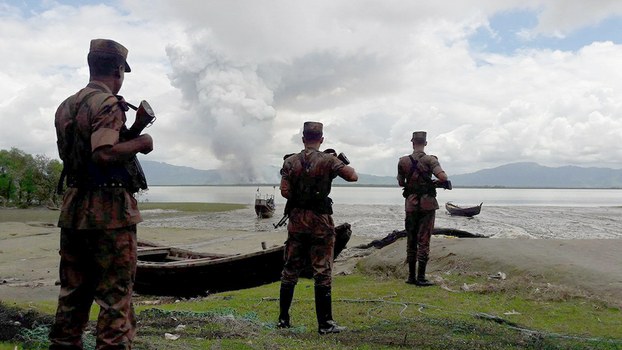
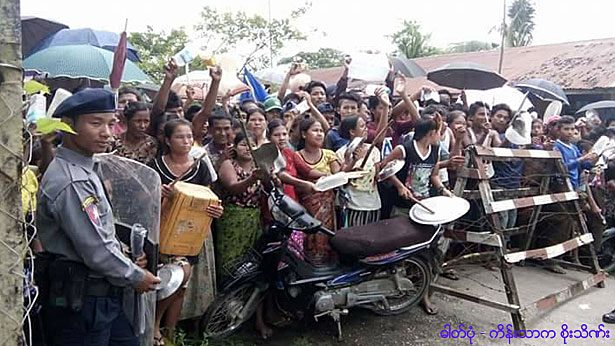
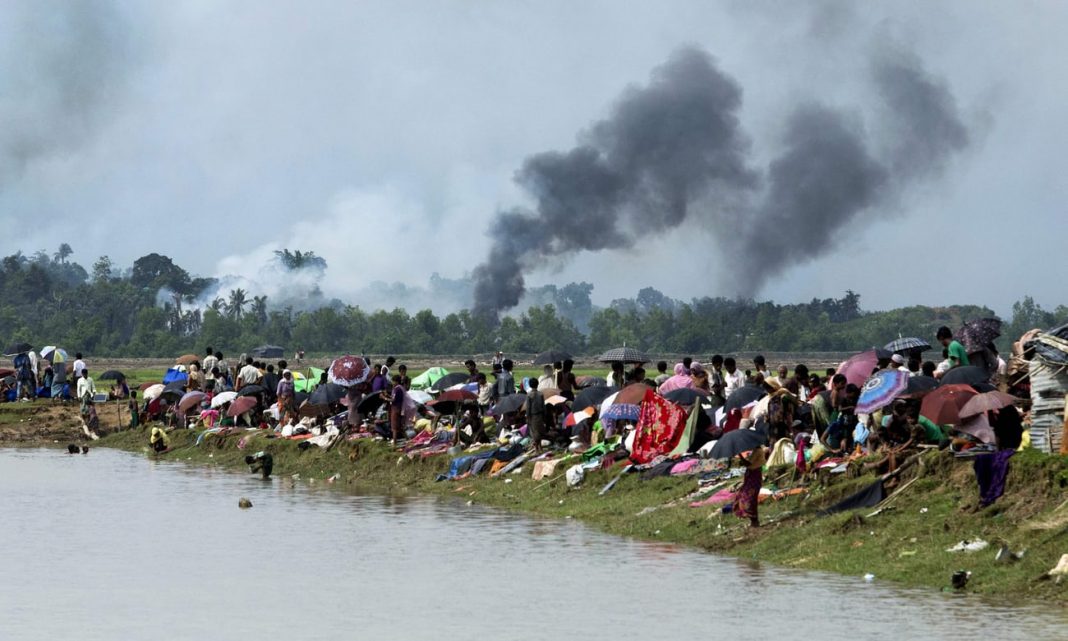
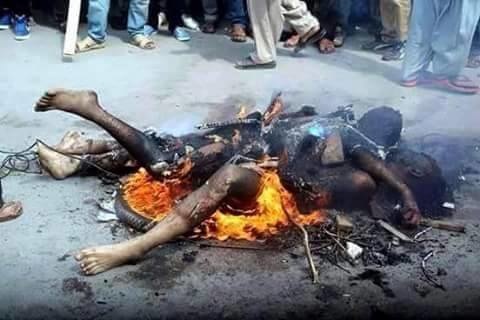
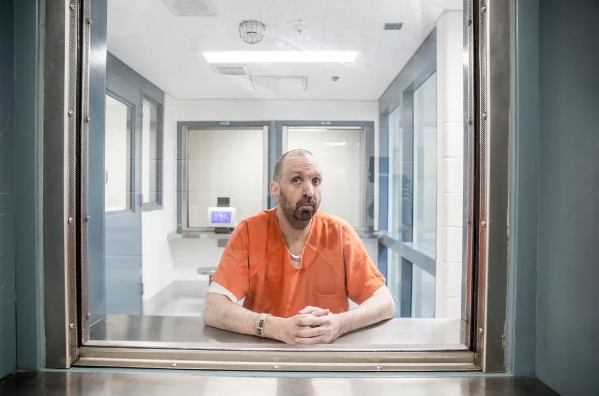
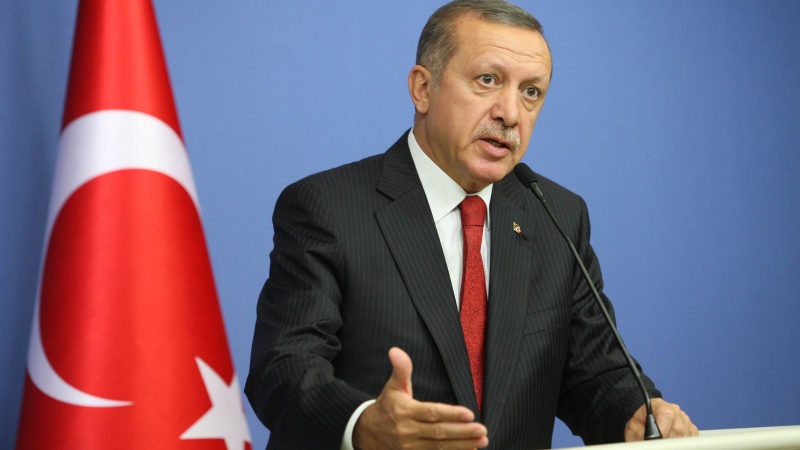
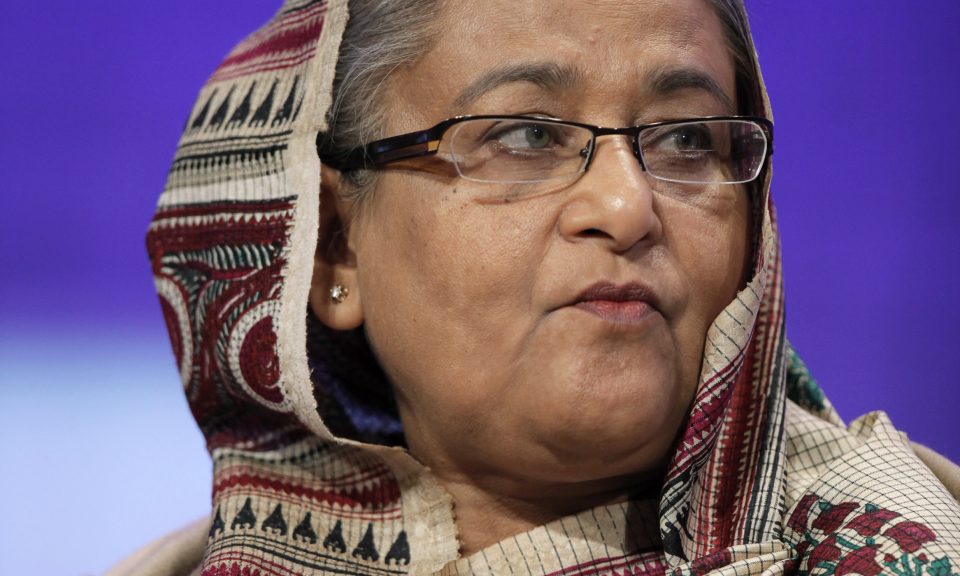
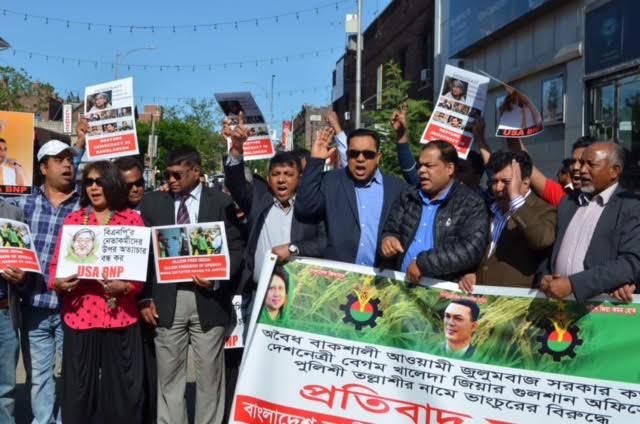
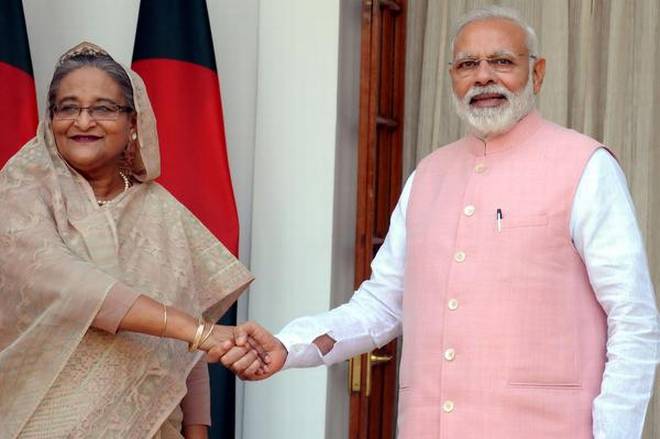

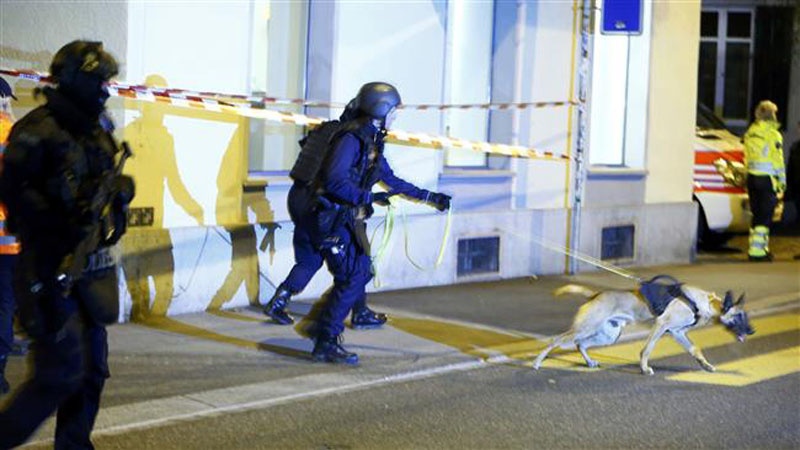
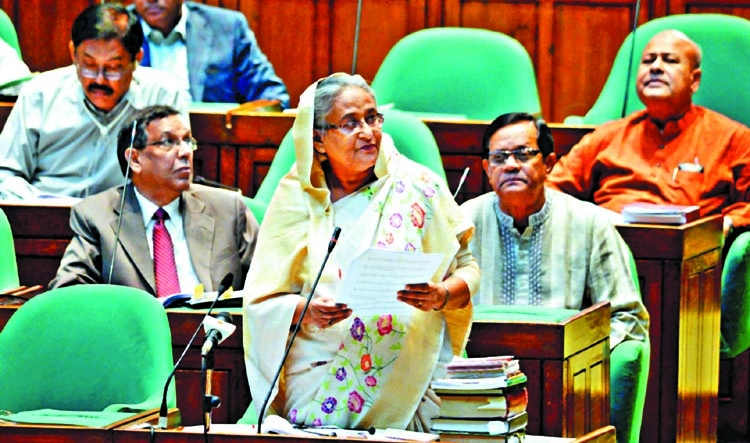





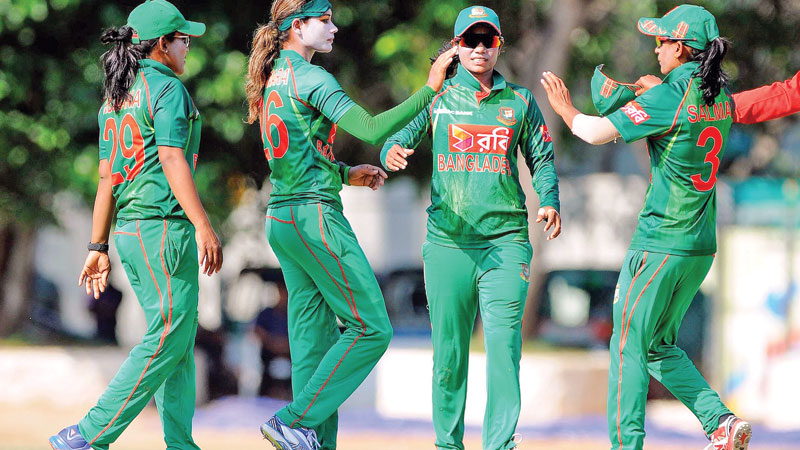


Comments